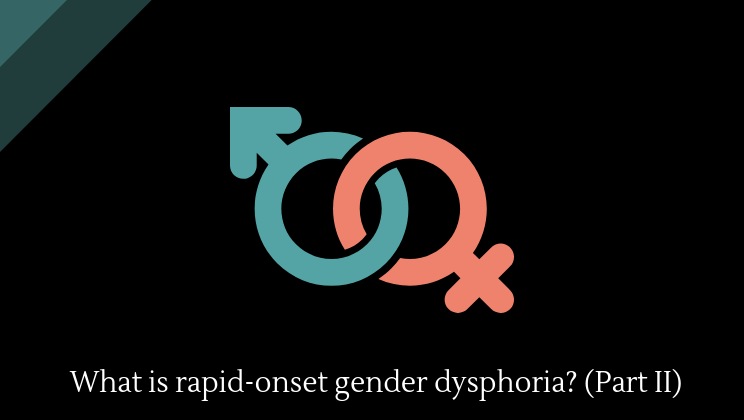What is rapid-onset gender dysphoria? (Part II)
Posted by Josh Taylor / December 1, 2018
At the end of the previous post, I cited a Medium article arguing against the term “rapid-onset gender dysphoria” on these grounds:
Transgender kids exist. They don’t have magical powers of persuasion to “turn” your child transgender. (If trans people did possess such powers, I can assure you that way more than 0.7% of the population would be transgender by now!) And if your child tells you that they are experiencing gender dysphoria, it isn’t because they’ve been “turned trans” by other children, or because it’s “trendy” (because seriously, it’s not — if it was, way more than 0.7% of the population would be transgender). Far and away, the most likely explanation is that they are simply experiencing regular old gender dysphoria. I encourage you to take them at their word, and give them the space to explore their gender and figure out who they are for themselves.
I want to challenge the author, though. She dismisses societal influence as “magical powers” or “trendy.” But social forces are real––according to the founder of sociology Emile Durkheim, they’re the only thing that’s real––and they should not be dismissed so quickly. And, as it happens, there is a sociological concept that does make sense of rapid-onset gender dysphoria: anomie. One sociologist describes it well:
Anomie, translated from French means normlessness, when things happen in society, change occurs so fast and we do not know what the norms are. Do we go back to the old norms? Create new ones? What happened to the current norms, why do they no longer apply?
I’m not suggesting that anomie explains it all, just that it must be considered––as this psychologist suggests.
More about health.
Comments are off for this post.